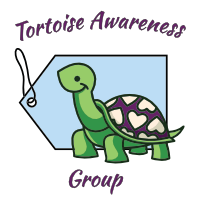Diet
Leopards should be fed a diet that is very high in fibre, about 80% grasses and 20% safe weeds and flowers with sprinkles of supplement. Calcidust or limestone flour should be added to their food 5 days a week. Nutrobal or Nekton MSA should be added 2 days a week. Lump chalk is recommended for nibbling on as they wish. They should NOT be fed any form of fruit or protein. Water should always be available.
The Indoor Enclosure
Vivariums are usually too small, too hot, and too humid. So young leopards should be housed in an open top tortoise table. The shop bought tables are usually too small, so you will likely have to make your own. This can easily be done with an old bookcase or wardrobe. Line the enclosure with a pond liner or something similar to protect the wood from moisture.
The enclosure should be at least 4 feet by 2 feet for a baby and at least 6 feet by 3 feet by the time is the tortoise is a year old. That way, the tortoise has plenty of room to move around and also sufficient space so that water bowls, hides, rocks, and plants can be used to create a mini habitat. There is no such thing as “too big,” so go with the biggest enclosure that you can. Going with 6 feet by 3 feet (or bigger) right off the bat will save you from having to upgrade in a year.
Leopards are prone to pyramiding, so a humid hide will be a great benefit in the first few years.
There should be fresh water available at all times. This should be provided in a container of suitable size so that the tortoise can completely fit into it to sit and soak, and it should be easy for him to get in and out of.
A large slate tile or flat rock makes the ideal platform for tortoises to feed from as it helps prevent the ingress of the substrate material which would undoubtedly occur if tortoises were fed from the floor of the enclosure.
Substrate
For substrate use sterilised soil or a soil/coco coir combination. The substrate should be fairly kept dry (but not so dry that it is dusty) as Leopards are sensitive to wet conditions. Make sure it is deep enough for the tortoise to bury himself if he wants to.
Lighting/Temperature
Temperature under the basking lamp during the day should be approximately 32c to 36c (90°F to 98F) with a cooler background area of 24c to 26c (75F to 78F).
In addition, UV is needed. The UVB is necessary for Vitamin D3 production (needed for calcium absorption, proper muscle functioning, etc.). You can use either a combi bulb or a strip UV. Recommended combi bulbs are MegaRay and Arcadia. If using a UV strip, look for 12%.
Lights should be turned off at night so that your tortoise can sleep in the dark. A drop in temperature during the night is also required, but the temperature must be set to no lower than about 22c (70F). You can use a CHE on a thermostat or a tubular heater to maintain the temperature at night while still keeping the enclosure dark.
Make sure bulbs are in ceramic holders and point straight down. It is wise to use a holder that is rated higher than the bulb you are using and a reflector. Tubes should ideally be fitted lengthwise down the center of the table. Heat bulbs should hang at least 12 inches above the top of the tortoise’s shell.
Leopards are very prone to pyramiding, so it’s especially important to get their temperatures correct. Ideal temperatures lead to slow and smooth growth. Consistently high temperatures will lead to fast and bumpy growth. High temperatures plus high humidity will lead to fast and smooth growth. Slow and smooth growth is always the goal.
Outdoor Enclosure
A good enclosure will allow your Leopard to graze, have plenty of space, and get natural UV while staying safe, warm, and dry.
Young Leopards should be outside as much as weather permits. An indoor area (provided by a cold frame, shed, or similar) with heat on a thermostat is ideal.
Adult Leopards should be outside all the time. They are housed in the same way as young Leopards but on a much larger scale. The boundaries must not be see through. They should have a space that is at least 10m square with an insulated, heated shed or similar outdoor building around 10 feet by 10 feet. Due to their size and strength, all light/heat fittings should be well out of reach of the tortoise and any structure used for outside accommodation should be strong and solid, with no accessible glazing.
Hibernation
Leopards are NOT a hibernating species. Never attempt to hibernate a Leopard, and do not let him get too cold.
Additional Information
The Leopard tortoise is the second largest land tortoise in Africa. There are two commonly recognised subspecies, Geochelone pardalis pardalis and Geochelone pardalis babcocki. In the wild they are found across Southern Africa, inhabiting the grass lands and savanna. Since they get so big, they will need plenty of space. Conditions that are too damp or cold can weaken their immune system, so special attention needs to be paid to the heat and drainage in their enclosure.
